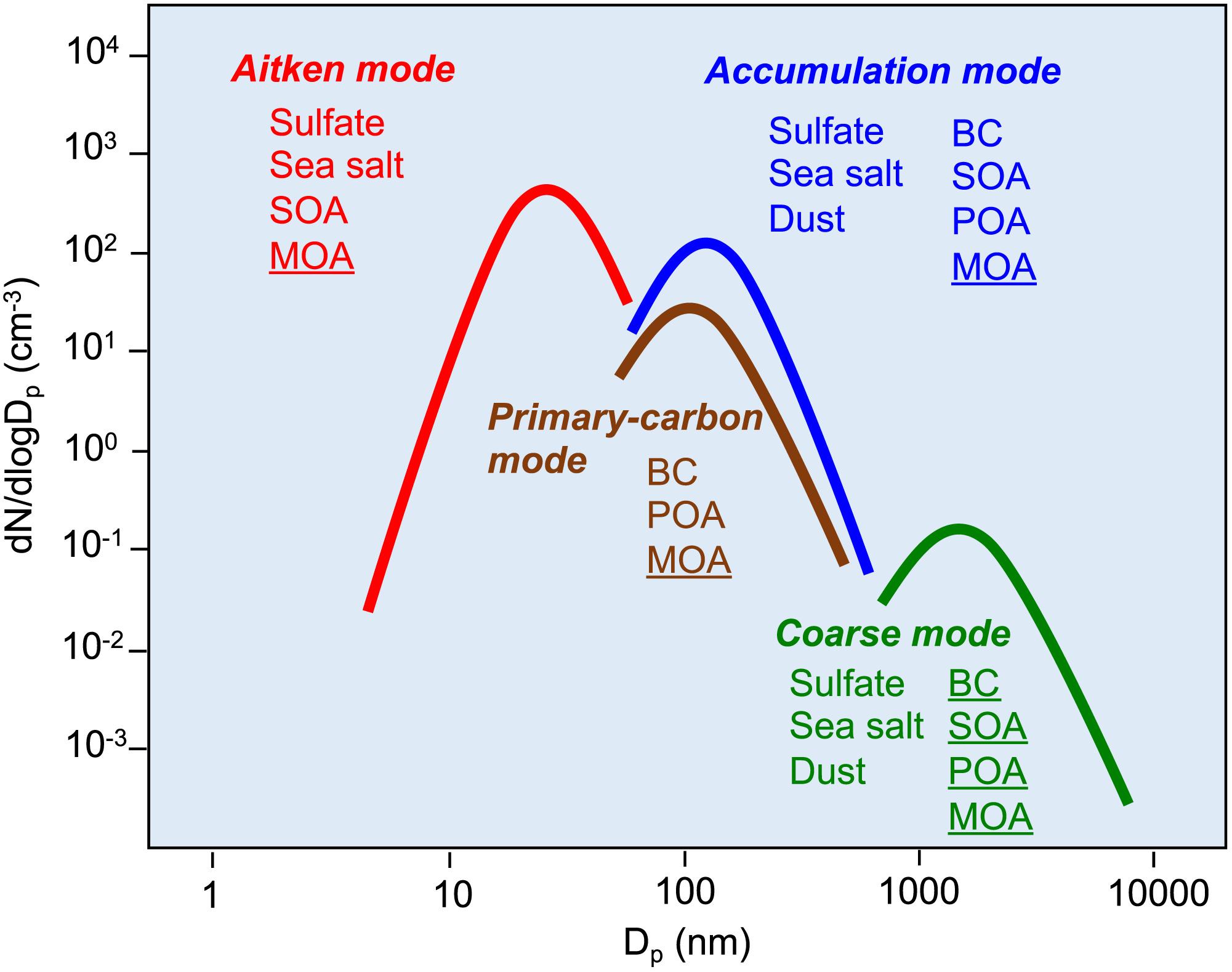New View of Aerosol Treatments

Researchers seek to understand the impact of individual new treatments of aerosols and provide guidance for future development of Earth system models. Photo by Nathan Dumlao on Unsplash. https://unsplash.com/photos/CaLEWzUd4O4.
Aerosol treatments in E3SM affect clouds, heat reflected to space, and Earth’s snow-or-ice-covered surface.
The Science
Aerosol and aerosol‐cloud interactions are a major source of uncertainty in Earth system models, impeding their ability to reproduce the observed historical warming and to predict changes in global climate and water cycles. This study describes the major new treatments of aerosols in E3SMv1 and assesses their impact on simulating global aerosol distribution, water cycle, and energy budget. Compared to observations and the model’s predecessor (without the new treatments), E3SMv1 shows improvements in characterizing global distributions of aerosols and their radiative effects. These improvements have important effects on simulating cloud and precipitation, reflection of sunlight back to space, and snow and ice on the Earth’s surface, all of which are key to modeling Earth system variability and change.

Schematic diagram of aerosol‐related processes, denoted by blue boxes in clear air, stratiform cloud (shaded area on the right), convective cloud (shaded area on the left), or ice cloud (shaded area on the upper left) in E3SMv1. Compared to E3SMv0, there are newly added processes (i.e., cloud‐base activation and secondary activation in convective cloud; resuspension of aerosols to the coarse mode; and aerosol linked to ice nucleation) or old ones that are affected by individual new treatments in E3SMv1. The new treatments are listed in the legend at the bottom and are marked on the processes that are directly modified or added. The aging process (i.e., primary‐carbon mode particles transferred to accumulation mode through condensation and coagulation) is not explicitly depicted here. The diffusion/impaction scavenging process (i.e., capture of interstitial aerosol particles by precipitation particles through Brownian diffusion and inertial impaction, which occurs both in clear air and clouds) is referred to as below‐cloud scavenging in previous MAM aerosol studies.
The Impact

Schematic of the original and enhanced MAM4 aerosol representation in E3SMv1. Combinations of aerosol species are treated in four size modes (Aitken, primary‐carbon, accumulation, and coarse mode), including the new marine organic aerosol (MOA) and all four carbonaceous aerosols (underlined) in the coarse mode for the enhanced MAM4.
Underlined aerosol components in each mode (colored lines) are new in E3SMv1.
This study suggests that the various new aerosol treatments have mixed effects on aerosol size distribution, transport, clouds, and radiative forcing. With the modifications, E3SMv1 shows a smaller sensitivity in liquid cloud water but a larger sensitivity in cloud drop size to changes in aerosols than its predecessor. With the new aerosol treatments, the model gives a weak global mean aerosol indirect forcing (−1.1 W/m2), although the total effective radiative forcing of −1.6 W/m2 still appears to be too strong enough for the model to reproduce the observed historical global mean temperature record. The comprehensive analyses summarized in this study will provide important guidance on improving aerosol treatments in future generations of E3SM to further remove some known biases and to add new capabilities to understand Earth system response to human perturbations.
Summary
Researchers implemented substantial new developments in various components of E3SMv1 to represent aerosols and light‐absorbing impurities as well as their interactions with clouds and radiation. These model upgrades are aimed at reducing some known biases or correcting model deficiencies. They then examined how the new treatments affect aerosol size distributions, transport, removal, and radiative forcing in E3SMv1, both individually and collectively, by conducting sensitivity experiments with individual changes turned on or off one at a time. The findings help understand the impact of individual new treatments on aerosols and provide guidance for the future development of E3SM and other Earth system models.
Publication
- Wang, H., Easter, R. C., Zhang, R., Ma, P.‐L., Singh, B., Zhang, K., et al. (2020). Aerosols in the E3SM Version 1: New developments and their impacts on radiative forcing. Journal of Advances in Modeling Earth Systems, 12, e2019MS001851. https://doi.org/10.1029/2019MS001851
Funding
- The U.S. Department of Energy Office of Science, Biological and Environmental Research supported this research as part of the Earth System Modeling Program Area through the Energy Exascale Earth System Model (E3SM) project.
Contact
- L. Ruby Leung, Pacific Northwest National Laboratory


